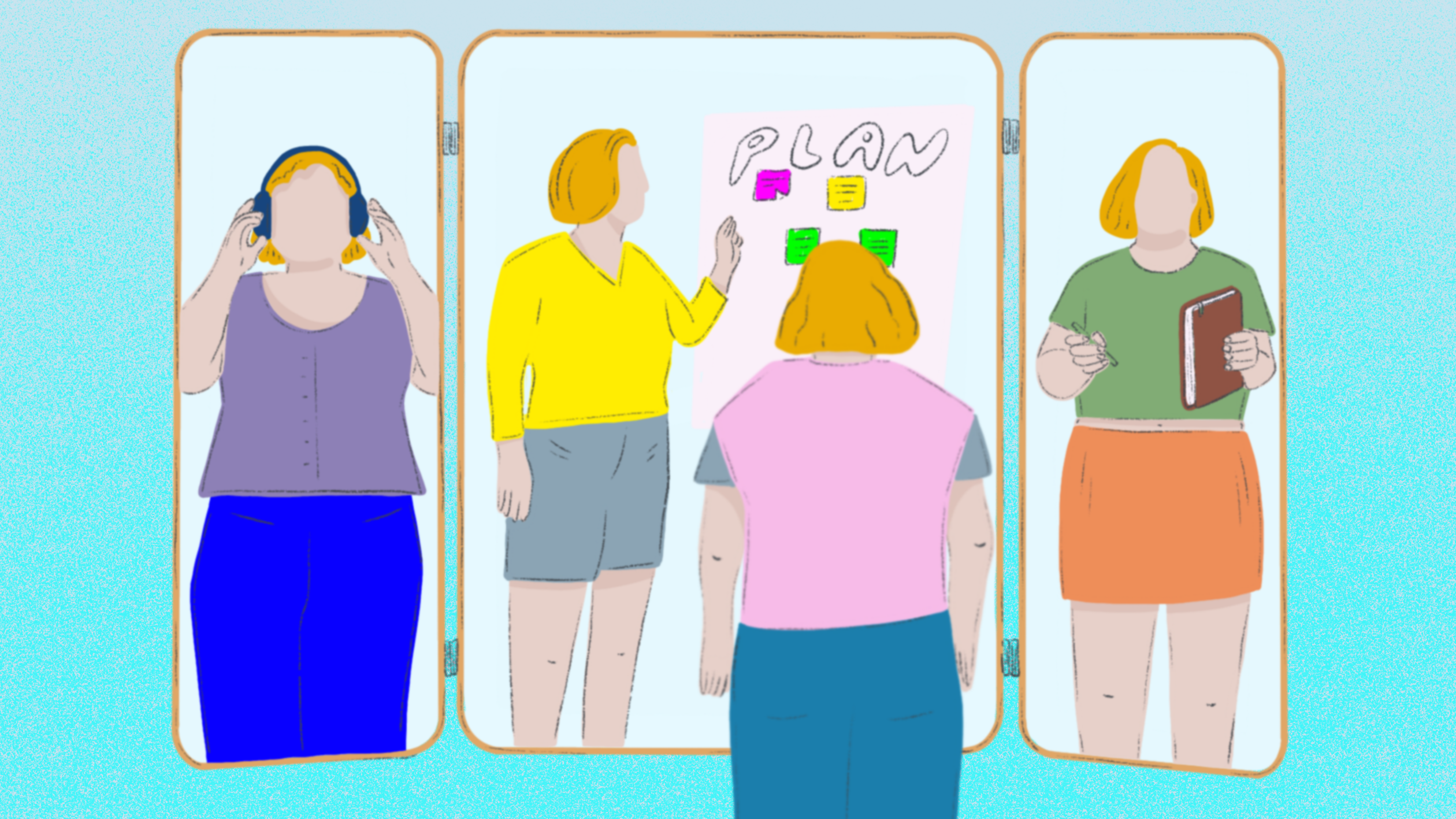
Illustration by Daniela Nunes
Reflections on youth work and the role of a youth worker during and post Covid-19
by Heili Griffith
It seems like Covid-19 is quickly becoming a thing of the past. Even though our focus has shifted to the new global challenges, the impact of the pandemic will still be felt for some time. We are only now – years after the start of the pandemic – beginning to fully grasp the very real consequences of the disruptions it has brought in young people’s education, as well as the negative impact it has had on their social well-being and mental health (OECD 2021; Pokhrel and Chhetri 2021). Adding to this mix the ongoing climate emergency, the war in Ukraine makes the very idea of living, developing and thriving in this world a complex and exhausting challenge – for everyone, but especially for young people.
In times like these, we, as youth workers, also have to face many difficult questions. What kind of support can we offer young people who are transitioning to adulthood in such uncertain times? What makes our role unique and how does youth workers’ support really differ from the support of family members, teachers or social workers (Taru et al. 2014)?
 “We are not in the same boat. We are in the same storm.”
“We are not in the same boat. We are in the same storm.”
At the start of the pandemic, different versions of this quote were shared across social media. Two simple sentences made a useful metaphor, inviting us to reflect on people’s different realities and to exercise empathy. Some people had yachts, some people canoes and some were barely staying afloat long before the pandemic. Covid-19 has affected us all – but in very different ways. We now know that disruptions in education, employment and in social relations have had the biggest negative impact on young people of all the age groups (Pokhrel and Chhetri 2021; Smyth and Nolan 2022).
Some entered Covid-19 already struggling with mental health challenges, which were further escalated by the serious threat to life or being forced into lockdown, in many cases – in households with abusive family members (Park and Walsh 2022). Others reaped the benefits of a slower pace of life while working from home and spending “quality time” with family, openly admitting that not much had changed for them during the pandemic (Levita et al. 2021).
Some jobs were recognised as essential and more in demand during the many lockdowns and restrictions we’ve all lived through. Meanwhile, economies all over the world were shrinking. Some people’s jobs and incomes were secure while those of others weren’t. We know now that young people who were beginning to transition from school to work and adult life were especially vulnerable to unemployment during the Covid-19 crisis. Youth unemployment rates have increased considerably almost everywhere and after a decade of consistent decline, the weighted average OECD unemployment rate among 15-29-year-olds increased from 8.6% at the end of 2019 to 11.5% at the end of 2020. This was due to young people’s jobs often being the most affected by Covid-19 and its restrictions and lockdown rules. Additionally, with less experience, knowledge and skills, this meant that young people would often be the first ones laid off, or there would be competition from more experienced jobseekers for the jobs available (OECD 2021).
Covid-19 also divided our society. There were seemingly only two distinct groups of people. There were those that trusted the government and understood the complexity of challenges brought by Covid-19, as it was unknown and something most of us had never experienced before. And there were those who gradually grew more and more suspicious and tired of the government and its decisions regarding lockdowns and restrictions, and who were unsure of the vaccines. As young people relied more heavily on social media for information, they were especially susceptible to fake news and disinformation (Herr 2021).
Three years of uncertainty in a young person’s life is undoubtedly a long time. For some young people it meant (half) missing a whole life stage, such as high school or university, and all of the social aspects that it comes with. Other important milestones were missed too: school graduations were cancelled, postponed or done online – so were family gatherings, such as weddings and funerals. While we tried to embrace the opportunities presented for a digital leap in youth work or education, as well as in everyday life, and we explored new ways of gathering and celebrating special moments, we also missed and grieved for the normality of the old ways of life.
If you would like to know more about young people’s transition to adulthood during and after Covid, have a look at some of the resources developed by the Youth Partnership. In 2022, they organised a symposium: Navigating Transitions: adapting policy to young people’s changing realities and a Perspectives on Youth seminar: Young people’s autonomy, which were among the flagship events of the European Year of Youth. All resources connected to these events, including the reports highlighting the main outcomes, are available online.
 Rethinking the youth worker's role
Rethinking the youth worker's role
The pandemic had an impact on youth work and the youth workers too. As studies have already shown, youth workers also noticed the increase in mental health issues among young people during Covid-19 (Jakniūnienė 2021). In Estonia and many other countries, mental health became at the forefront of thinking for different people working with young people. Additionally, youth workers, like many others, had to become creative in thinking of new ways to do their job. They had to learn fast to use online tools and social media platforms, as well as thinking of different online activities to engage young people in youth work when it was the only way to keep in touch (ibid. 2021).
I believe while many youth workers were trying their best to adjust to the new ways of working, many of them were also rethinking their role as a youth worker evoked by the new challenges and dilemmas in their work. For example, I remember that while some youth workers were doing an excellent job keeping in touch with young people on different social media platforms and coming up with activities for them, they were also grappling with the dilemma of whether it was right to make young people spend even more time on devices when they were exhausted from having spent their whole day studying online.
In some cases, youth workers were forced to rethink their role as a youth worker, because for example in some municipalities in Estonia they were asked to walk the streets to remind young people of the Covid-19 restriction rules. In many cases, youth workers were the main trustworthy source of information regarding Covid, vaccines and the restrictions, but on the other hand it was a difficult dilemma for many youth workers. While it gave them an opportunity to see young people and give them accurate information about the current situation regarding Covid, they didn’t want young people to see them as police or someone working with the police telling them to go home. They were worried that the trust they had built up over the years would be broken and the relationships damaged just because their role and job had all of a sudden changed.
Some youth workers experienced a similar situation in schools (in Estonia there is a youth worker in most schools). Sometimes youth workers were assisting the teachers with online classes or helping young people with homework. This also made youth workers question their role and whether this was something they were supposed to be doing during exceptional circumstances, or if there was something else they should have been doing instead. When restrictions eased and people were allowed to gather in pairs or smaller groups, youth workers spent more one-to-one time with young people by going for walks and just talking to them. For example, a school youth worker used to take young people for walks to talk about upcoming exams and future career options. There is no doubt in my mind that most youth workers found ways to be there for their young people at this unusual time and while the time of Covid restrictions was challenging, it also forced them to reflect on their youth work practice as well as their role.
 Youth worker’s role is defined by the purpose
Youth worker’s role is defined by the purpose
To me, the uniqueness of the youth worker’s role is something I have been reflecting on a lot before, during and post-Covid. In youth work we are constantly trying to figure out what is special about the work we do and how it differs from other similar jobs with young people (Taru et al. 2014). I believe the strength and value of youth work is actually quite simple. During Covid it seemed like youth workers – despite also being tired and overworked – were the ones who had more time for young people to talk about their anxieties and worries around Covid-19, but also about their struggles with school performance and family relationships (Jakniūnienė 2021). Perhaps we sometimes undervalue ourselves and underestimate the importance of flexibility in our work, which enables us to tailor it around an individual young person’s needs and circumstances.
Seeing the youth worker’s role as some kind of support or prevention worker, or support staff to teachers and social workers as mentioned above, is a rather narrow view of youth work (Cooper 2012). As the storm metaphor beautifully illustrates, all young people are different with different needs and wants and that should be the starting point for every youth worker. This means that while prevention or providing support is an important part of a youth worker’s job, so is empowerment, advocacy, activism, coaching and mentoring. For example, during the Covid restrictions, youth workers were the ones questioning whether lockdown rules were too hard on young people and acting as advocates on their behalf (ibid. 2012).
I believe Covid-19 prompted us to think more critically about our role and about youth work, and it made us realise that a youth worker’s role isn’t defined just by the tools we use or the activities we do. Perhaps it’s more defined by the purpose we serve in serving the young people.
 References
References
Cooper T. (2012), “Models of youth work: a framework for positive sceptical reflection”,
Youth & Policy No. 109, pp. 98-117.
Herr O. (2021), Young people and vaccine hesitancy – what role does social media play?, available at www.britishscienceassociation.org/blog/young-people-and-vaccine-hesitancy-what-role-does-social-media-play, accessed 3 April 2023.
Jakniūnienė M. (2021), Once upon a time… youth work met Covid, available at https://pjp-eu.coe.int/en/web/coyote-magazine/once-upon-a-time-youth-work-met-covid, accessed 3 April 2023.
Levita L. et al. (2021), Initial research findings on the impact of COVID-19 on the well-being of young people aged 13 to 24 in the UK, available at https://psyarxiv.com/uq4rn/, accessed 3 April 2023.
OECD (2021), What have countries done to support young people in the Covid-19 crisis?, OECD Policy Responses to Coronavirus (Covid-19), available at www.oecd.org/coronavirus/policy-responses/what-have-countries-done-to-support-young-people-in-the-covid-19-crisis-ac9f056c/, accessed 3 April 2023.
Park W. J. and Walsh K. A. (2022), COVID-19 and the unseen pandemic of child abuse, available at https://bmjpaedsopen.bmj.com/content/6/1/e001553, accessed 3 April 2023.
Pokhrel S. and Chhetri M. (2021), A literature review on impact of COVID-19 pandemic on teaching and learning, available at https://doi.org/10.1177/2347631120983481, accessed 3 April 2023.
Smyth E. and Nolan A. (2022), Disrupted transitions? Young adults and the Covid-19 pandemic, available at www.esri.ie/system/files/publications/RS142.pdf, accessed 3 April 2023.
Taru M., Coussée F. and Williamson H. (2014), “Youth work in connection to policies and politics”, in Taru M., Coussée F. and Williamson H. (eds), The history of youth work in Europe, Volume 4, pp. 125-36, Council of Europe Publishing, Strasbourg.


